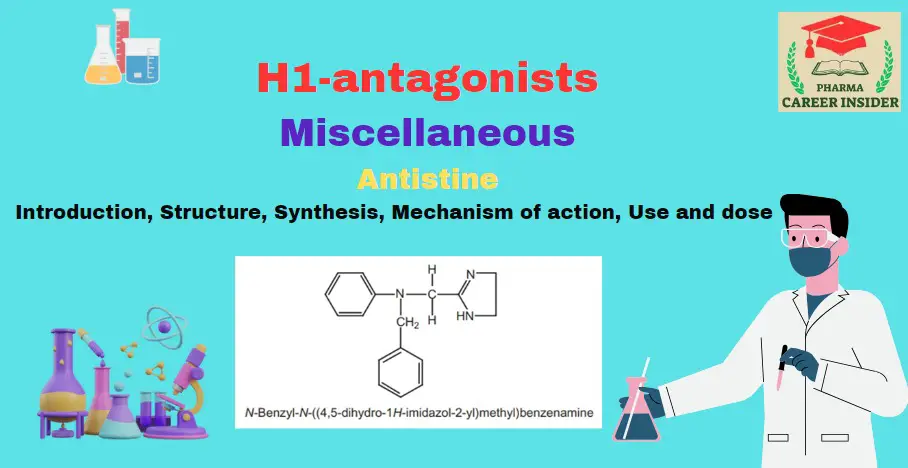Antazoline (Antistine)
Introduction
Antazoline maleate, a compound blending antazoline—an antihistamine—with maleic acid, stands as a pharmaceutical agent notable for its therapeutic versatility. Functioning as a competitive antagonist at H1 histamine receptors, it effectively alleviates symptoms associated with histamine release. Additionally, its potential antimuscarinic effects contribute to its utility in conditions where a reduction in acetylcholine activity is beneficial.
Primarily employed in ophthalmic solutions, antazoline maleate offers temporary relief from eye redness and itching induced by allergic reactions. Found in eye drops and nasal sprays, it addresses conditions such as allergic conjunctivitis and rhinitis. Users are cautioned about potential side effects, including temporary burning or stinging in the eyes.
Structure

Synthesis

Mechanism of action
Antazoline binds to the histamine H1 receptor, effectively inhibiting the action of endogenous histamine. This inhibition results in temporary relief from the negative symptoms induced by histamine.
Properties and uses:
Antazoline hydrochloride is a white crystalline powder, sparingly soluble in water, soluble in alcohol, and slightly soluble in methylene chloride. The phosphate salt is soluble in water and has a bitter taste. It is used for the treatment of rhinitis and conjunctivitis.
Assay:
Dissolve the sample in alcohol and titrate it against 0.1 M alcoholic potassium hydroxide using phenolphthalein as an indicator.
Dose:
The usual dose is 50–100 mg per day.




